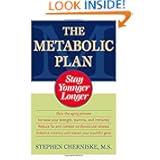Picking up where we left off...What can you eat? What options are best? Is the cheese and nut diet a good option? (hint: NO!!) How about the lard and burger diet? (um...still, NO!!)
So...let's look at some reasonable breakfast options:
*1 piece whole grain toast+ 1 TBSP peanut butter+fruit (can vary depending on your fruit option/1 cup berries or whole fruit like nectarine or apple or similar)=280 calories
*1 egg, 1 piece whole grain toast, 1 piece of fruit=210 calories
*Oatmeal (heart healthly portion is 3/4 cup dry)+ 1 cup berries (YUM!!) 194 calories
*Lowfat cottage cheese (1 cup of 1%) + 1 cup berries 247 calories
And for lunch:
*1 whole red pepper (yes the whole thing!), plus two eggs, hard boiled, and mixed with 1 TBSP reduced fat olive oil mayo, plus yellow corn tortilla chips=337
*1 whole red pepper, plus 3 TBSP hummus, plus one apple=221
*4 large leaves of romaine lettuce + 3oz lean ham (or turkey)+2 tangerines+ corn tortilla chips (10-13)=281 calories.
* 1 cup of beef stew with veggies, plus and apple=365 (this beef stew is created with my vegetable soup base (I've sent this recipe out already), and adding lean beef (shredded or ground, 1 lb.), 1 can of white beans, and 8 oz cooked noodles (I use brown rice). Season to your delight, and it will make enough for a family of 4, plus two additional servings.
Let's keep building the day, shall we?
Snacks:
*1 apple, cut into slices, 1.25 TBSP peanut butter, mixed with 1/4 cup rice crispies (you mix the peanut butter and the cereal together, and put between the apple slices--eat like little finger sandwiches--filling and delicious!) 218 cal.
* 1 oz cheese (you need to check your cheese, I used my favorite, Dubliner!), 1 apple + 1 cup blackberries...237 cal., and this is a LOT of food!
* spinach salad...2 cups spinach, plus 2 slices of well cooked bacon crumbled (and you can even use the turkey bacon, although my numbers are based on regular... and viniagrette=127--for 2 CUPS of spinach!!! and bacon!
*what if you want nuts? 1/4 cup!!! period...add 2 small tangerines, and you have 250 cal.
* tuna, 2oz can, plus tortilla chips(13 chips on my bag), plus a whole grapefruit=262
It's really not hard to be full, satisfied, and eat well, while still losing weight. But you have got to concentrate, be responsible for your choices, and stay away from those dense foods. Even still, you can, on occasion, have those in MODERATION. You have to measure it out and KNOW what you are putting in. Be accountable for what you are putting in your mouth.
**No amount of exercise will make up for an unhealthy diet.
So...let's look at some reasonable breakfast options:
*Nature valley granola bar + banana=290 calories
*1 piece whole grain toast+ 1 TBSP peanut butter+fruit (can vary depending on your fruit option/1 cup berries or whole fruit like nectarine or apple or similar)=280 calories
*1 egg, 1 piece whole grain toast, 1 piece of fruit=210 calories
*Oatmeal (heart healthly portion is 3/4 cup dry)+ 1 cup berries (YUM!!) 194 calories
*Lowfat cottage cheese (1 cup of 1%) + 1 cup berries 247 calories
And for lunch:
*1 whole red pepper (yes the whole thing!), plus two eggs, hard boiled, and mixed with 1 TBSP reduced fat olive oil mayo, plus yellow corn tortilla chips=337
*1 whole red pepper, plus 3 TBSP hummus, plus one apple=221
*4 large leaves of romaine lettuce + 3oz lean ham (or turkey)+2 tangerines+ corn tortilla chips (10-13)=281 calories.
* 1 cup of beef stew with veggies, plus and apple=365 (this beef stew is created with my vegetable soup base (I've sent this recipe out already), and adding lean beef (shredded or ground, 1 lb.), 1 can of white beans, and 8 oz cooked noodles (I use brown rice). Season to your delight, and it will make enough for a family of 4, plus two additional servings.
Let's keep building the day, shall we?
Snacks:
*1 apple, cut into slices, 1.25 TBSP peanut butter, mixed with 1/4 cup rice crispies (you mix the peanut butter and the cereal together, and put between the apple slices--eat like little finger sandwiches--filling and delicious!) 218 cal.
* 1 oz cheese (you need to check your cheese, I used my favorite, Dubliner!), 1 apple + 1 cup blackberries...237 cal., and this is a LOT of food!
* spinach salad...2 cups spinach, plus 2 slices of well cooked bacon crumbled (and you can even use the turkey bacon, although my numbers are based on regular... and viniagrette=127--for 2 CUPS of spinach!!! and bacon!
*what if you want nuts? 1/4 cup!!! period...add 2 small tangerines, and you have 250 cal.
* tuna, 2oz can, plus tortilla chips(13 chips on my bag), plus a whole grapefruit=262
It's really not hard to be full, satisfied, and eat well, while still losing weight. But you have got to concentrate, be responsible for your choices, and stay away from those dense foods. Even still, you can, on occasion, have those in MODERATION. You have to measure it out and KNOW what you are putting in. Be accountable for what you are putting in your mouth.
**No amount of exercise will make up for an unhealthy diet.
